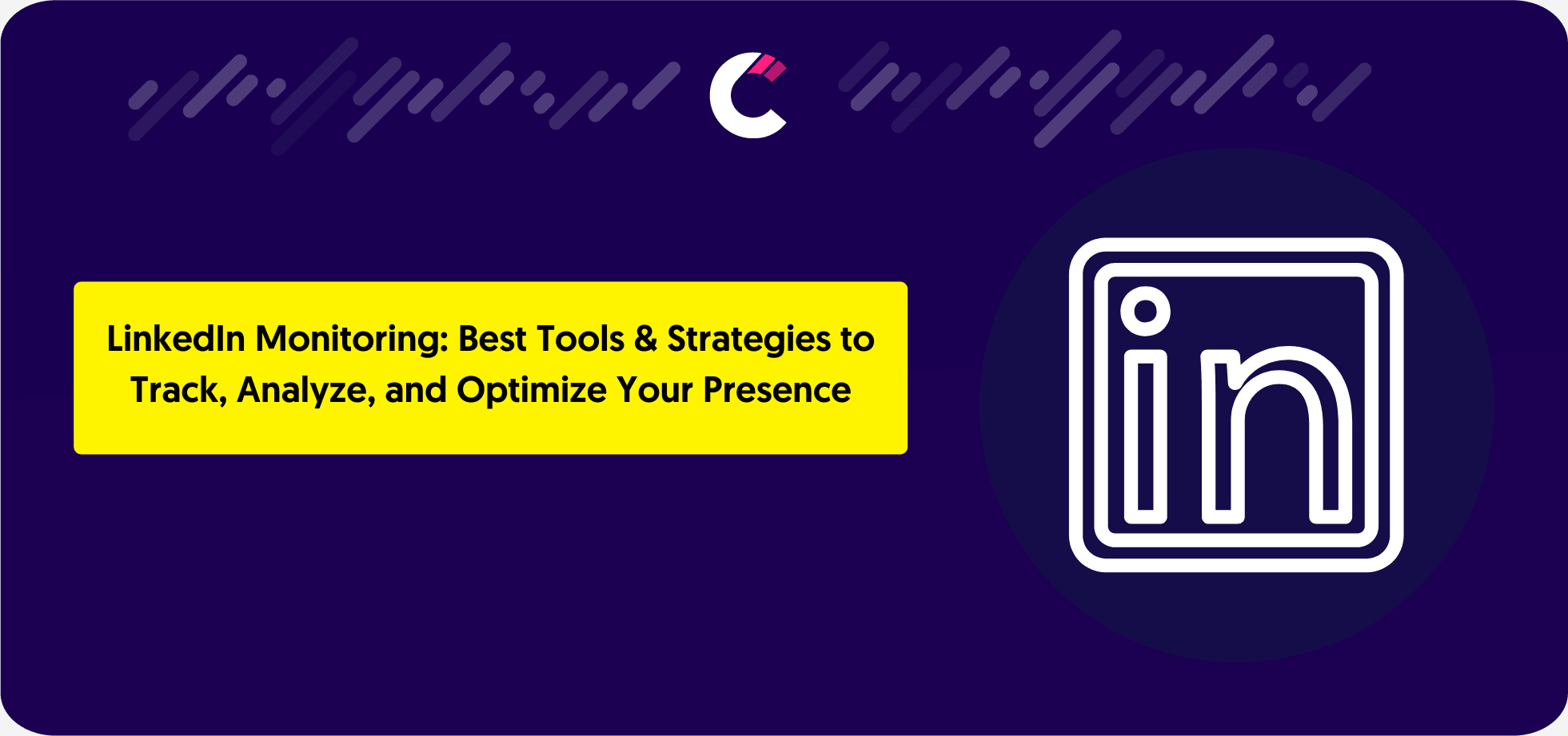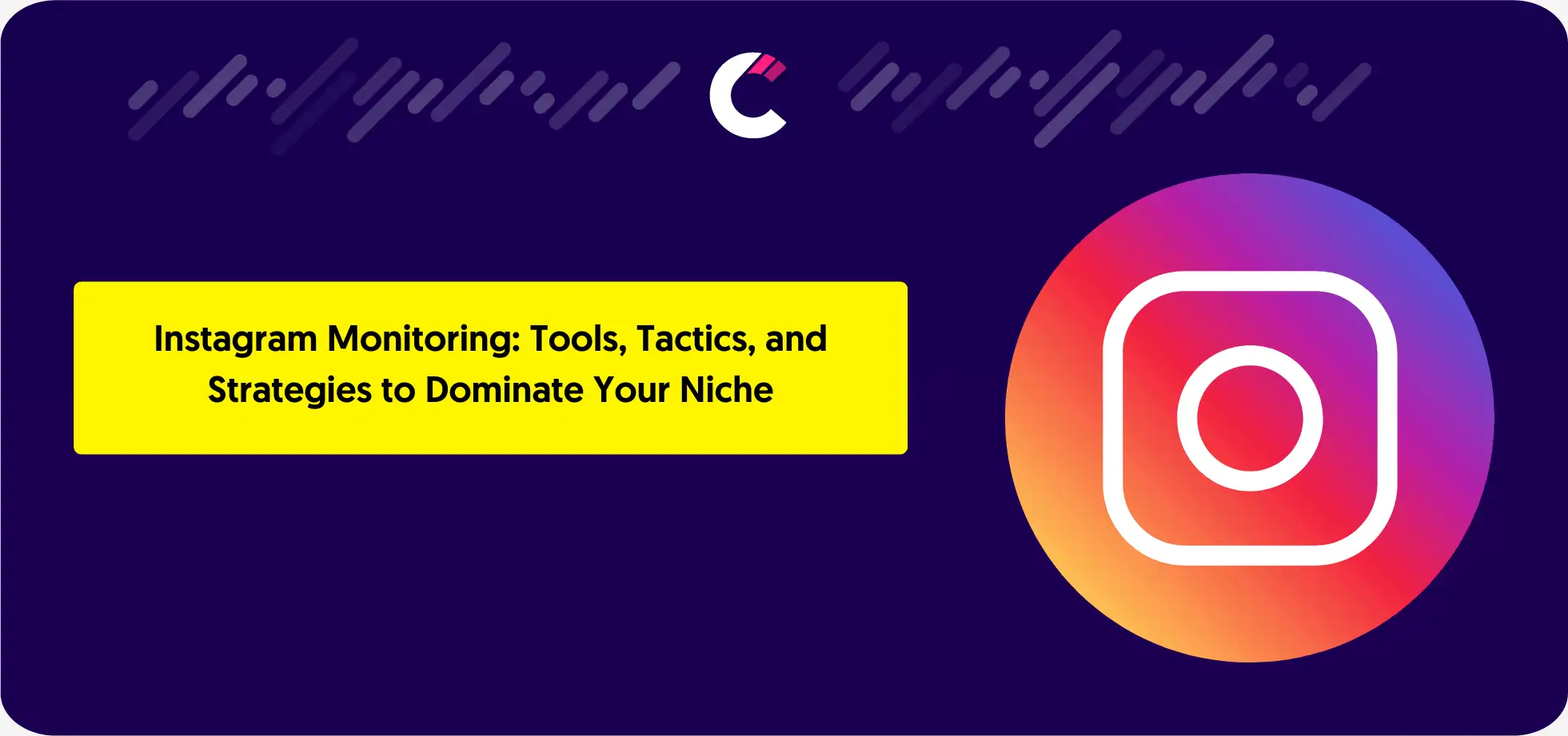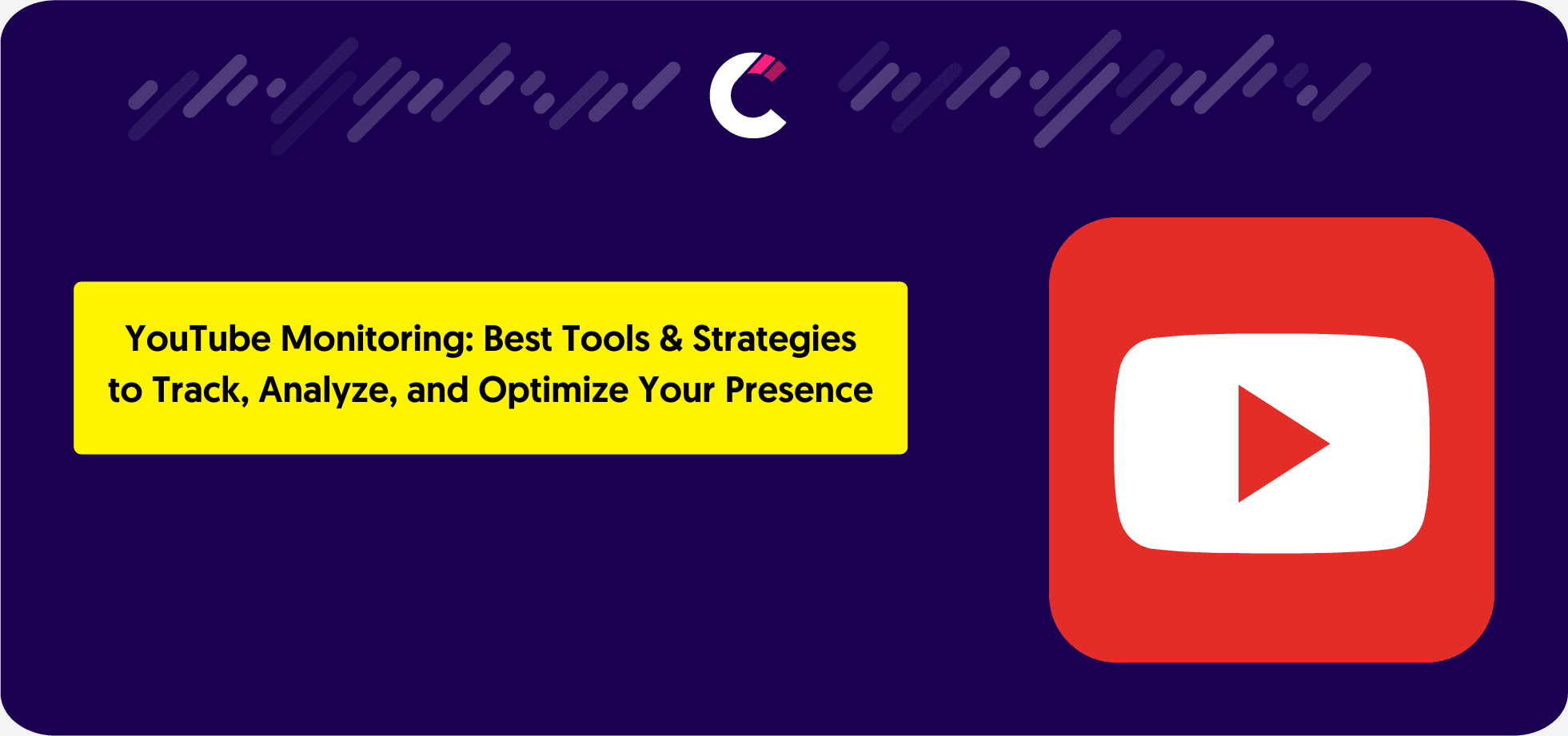What Is Competitive Mapping and Why Is It Important?
When I first started exploring competitive mapping, I quickly realized how essential it is for understanding where your business stands in the market.
Competitive mapping isn’t just about comparing prices or products—it’s about creating a detailed picture of your competitors’ strengths and weaknesses, and using that to position yourself more effectively. From my experience, this practice is crucial for several reasons:
Uncovering Your Position: By mapping out where competitors excel or fall short, we can identify untapped opportunities for our own business. It helps me assess where we stand relative to others, and whether we’re truly meeting our customers’ needs or missing the mark.
Refining Marketing and Product Strategies: I’ve seen how a solid competitive map can completely transform a marketing strategy. It allows us to fine-tune our messaging, focus on differentiating features, and find new ways to appeal to our target audience.
Anticipating Market Shifts: One of the most powerful aspects of competitive mapping is the ability to foresee market changes. Understanding competitors’ future moves and how they might adapt to new trends gives us a significant edge.
If you’re not already integrating competitive mapping into your strategy, you’re missing out on a major opportunity to stay ahead.
I’ve found that businesses who neglect this process risk falling behind, especially in industries that evolve quickly. By actively mapping your competition, you’re not only staying relevant—you’re positioning yourself to lead.
The Benefits of Competitive Mapping
In my experience, competitive mapping offers a range of benefits that go beyond simple competitor comparison. It helps you make smarter, more data-driven decisions that can have a real impact on your business.
Here are a few key advantages I’ve seen firsthand:
-
Better Decision-Making in Marketing: Competitive mapping gives you a clearer understanding of what’s working for your competitors, helping you avoid costly mistakes and focus on what’s most effective for your brand. It’s not just about copying what others are doing; it’s about finding ways to improve on it and stand out.
-
Improved Product Development Strategies: Mapping your competitors can highlight gaps in the market that your product can fill. I’ve seen how businesses that invest time in this process are more likely to develop products that meet customer needs and expectations, giving them an edge in the market.
-
Identifying Opportunities and Anticipating New Competitors: With a competitive map, you can spot emerging players and trends before they gain traction. This allows you to pivot and adjust your strategies early, ensuring that you’re never caught off guard.
-
Enhancing Customer Experience: Competitive mapping isn’t just about beating your competitors; it’s also about understanding how they engage with customers. By analyzing their strengths, you can improve your own customer experience to keep clients coming back.
-
Staying Competitive in Evolving Markets: Markets change quickly, and if you don’t keep an eye on what’s happening, you risk being left behind. Competitive mapping allows you to stay agile and responsive to changes, ensuring that your business remains competitive over time.
In short, competitive mapping empowers you with the insights needed to make informed decisions across marketing, product development, and customer experience. By continuously refining your approach, you can stay ahead in the game and lead your industry.
Social Media and Digital Presence Competitive Mapping
Social media is a key component of competitive mapping, providing valuable insights into competitors’ engagement strategies and brand positioning. By tracking their social media activity, you can:
Analyze Engagement: Monitor what types of content are driving engagement, helping you adjust your strategy to better resonate with your target audience.
Track Sentiment and Content: See how competitors’ content is perceived, revealing customer pain points and areas for improvement in your own messaging.
Spot Influencer and Partnership Opportunities: Identify successful influencer collaborations or partnerships that could inform your own strategic alliances.
Integrating social media analysis into your competitive map helps you stay agile and adapt your digital presence to remain competitive.
How to Create a Competitive Mapping Strategy
When I first started working on competitive mapping, I quickly realized it’s not as complicated as it might seem. It’s all about gathering the right data and making comparisons that help you move your business forward.
Here’s how I approach it:
Step 1: Identify Your Competitors
The first thing I do is identify both direct and indirect competitors. Direct competitors sell similar products or services, while indirect ones offer alternatives. I also make sure to include both local and global competitors to get a full picture. A tool I often use is the free competitor finder tool—it helps me quickly pinpoint competitors in the market, saving me time and effort.Step 2: Choose a Focus Area for Your Mapping
Next, I focus on specific areas of my business. This could be pricing, product features, marketing tactics, or customer support. I find that having a narrow focus makes it easier to see where we can improve and where we’re already doing well compared to others.Step 3: Assess Your Strengths and Weaknesses
Once the map is set, I take a step back and evaluate how my business is positioned. Competitive mapping shows me where we’re strong and where we have room to grow. For example, I might discover that a competitor is offering better pricing, which could be an area to work on for us. This step helps me find the gaps and act on them quickly.Step 4: Create a Visual Map
Finally, I put all the information together into a visual map. This could be a simple chart or table, making it easier to compare our strengths against competitors. Having everything laid out visually allows me to make quicker decisions on where to focus next.
These steps have helped me stay on top of competition, improve our strategies, and continue growing the business. By consistently mapping out where we stand in comparison to others, we can be more proactive and responsive to changes in the market.
How Competitors App Can Enhance Your Competitive Mapping
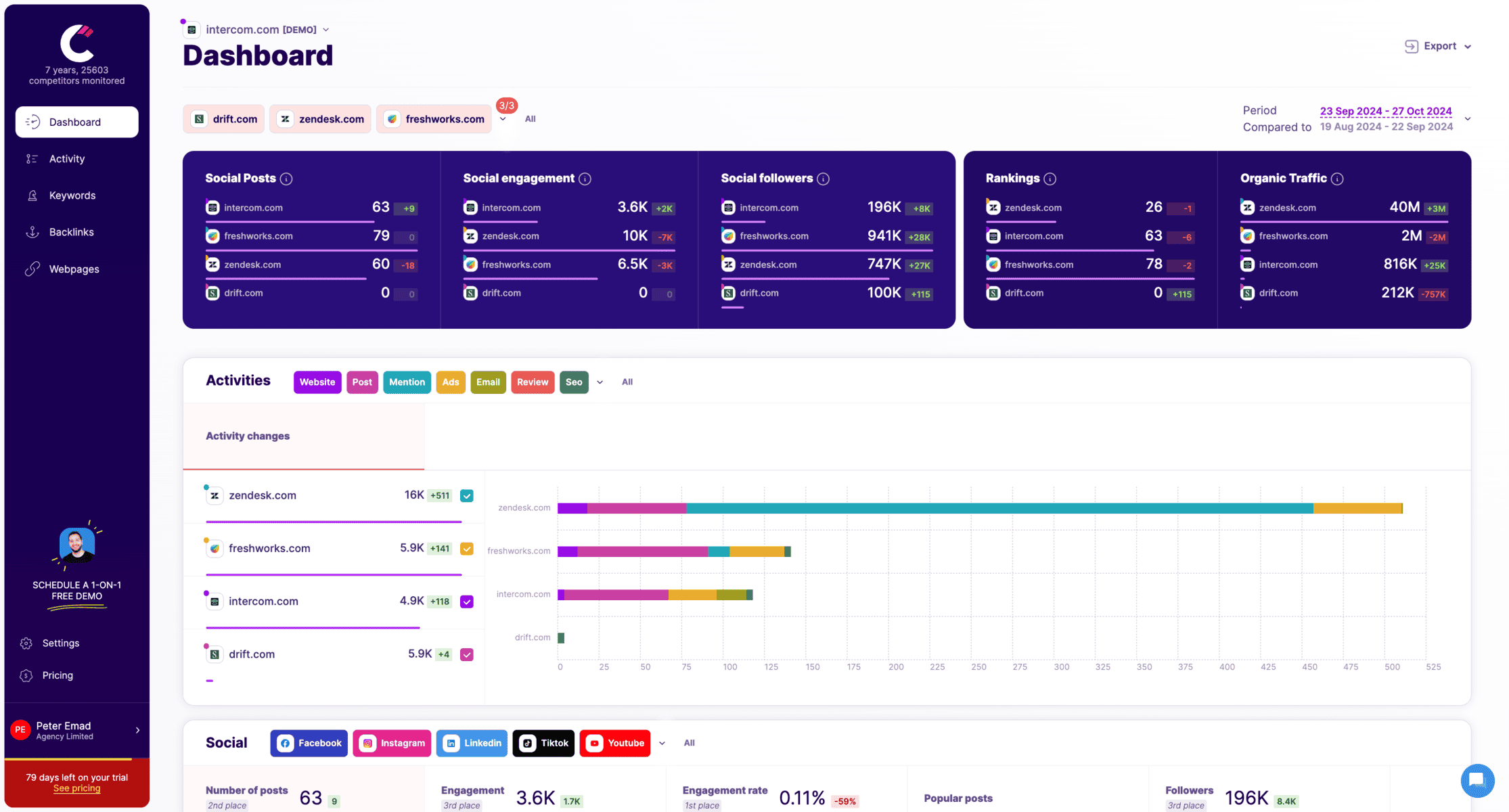
One tool that we highly recommend for tracking competitors’ online activities is Competitors App.
It offers a range of features that can significantly improve your competitive mapping process:
Track Competitor Traffic: With Competitors App, you can monitor your competitors’ website traffic. This feature gives you a clear view of how much traffic they are getting, how it compares to your own, and which channels are driving the most visitors. By analyzing this, you can identify which marketing channels are working for your competitors and adjust your strategy accordingly.
Content and SEO Strategy Analysis: The app also allows you to analyze your competitors’ content strategies and SEO tactics. You can see which keywords they are ranking for, how their content is performing, and where they are gaining backlinks. This is incredibly valuable for understanding their SEO strategy and finding areas where you can improve your own content to compete more effectively.
Real-Time Insights: One of the best things about Competitors App is its ability to provide real-time insights into competitor activities. This means that you can stay up-to-date with any new developments in their strategies, whether it’s a shift in product offerings, changes in pricing, or a new marketing campaign. These insights allow you to make timely adjustments to your own strategy to stay ahead of the competition.
Using Competitors App for competitive mapping helps you get detailed, actionable data that can be used to refine your business strategies.
By tracking traffic, analyzing content and SEO performance, and receiving real-time insights, you can stay on top of competitor moves and make informed decisions that drive growth.
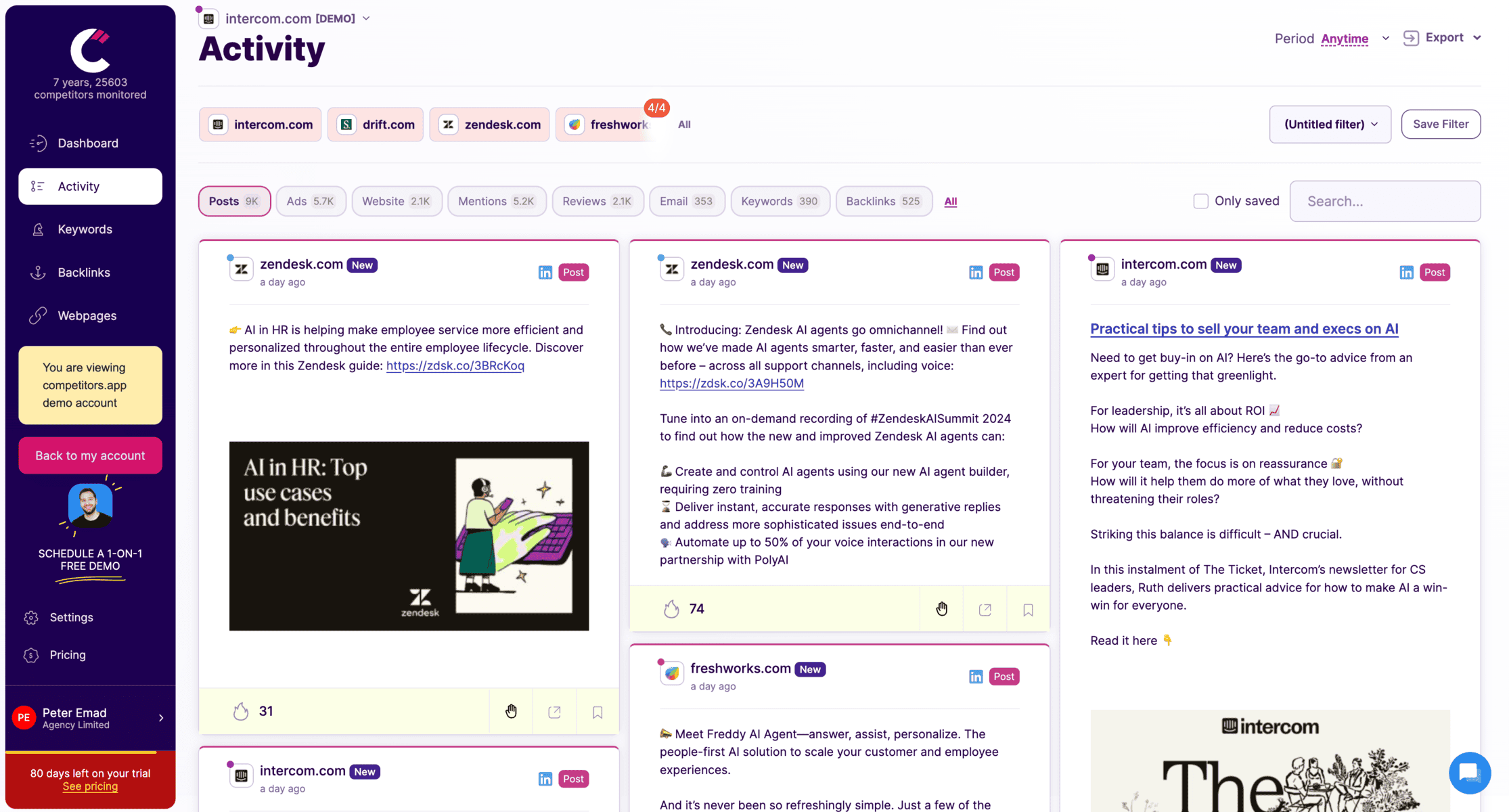
Tracks competitor social media updates across LinkedIn, Facebook, Twitter, and more.
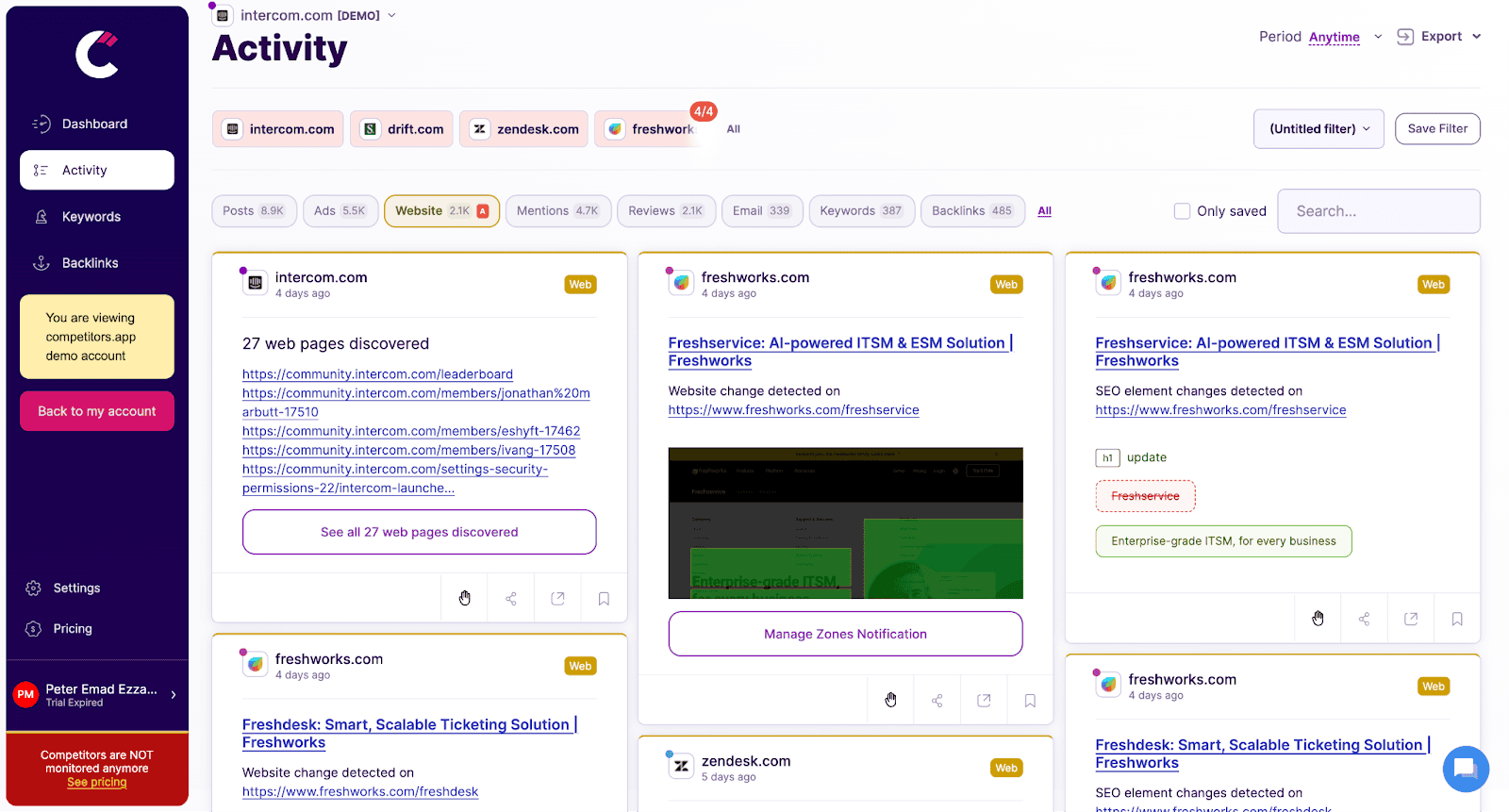
Monitors changes on competitors’ websites, such as product updates, pricing adjustments, and new messaging, providing instant alerts to help sales teams respond promptly.
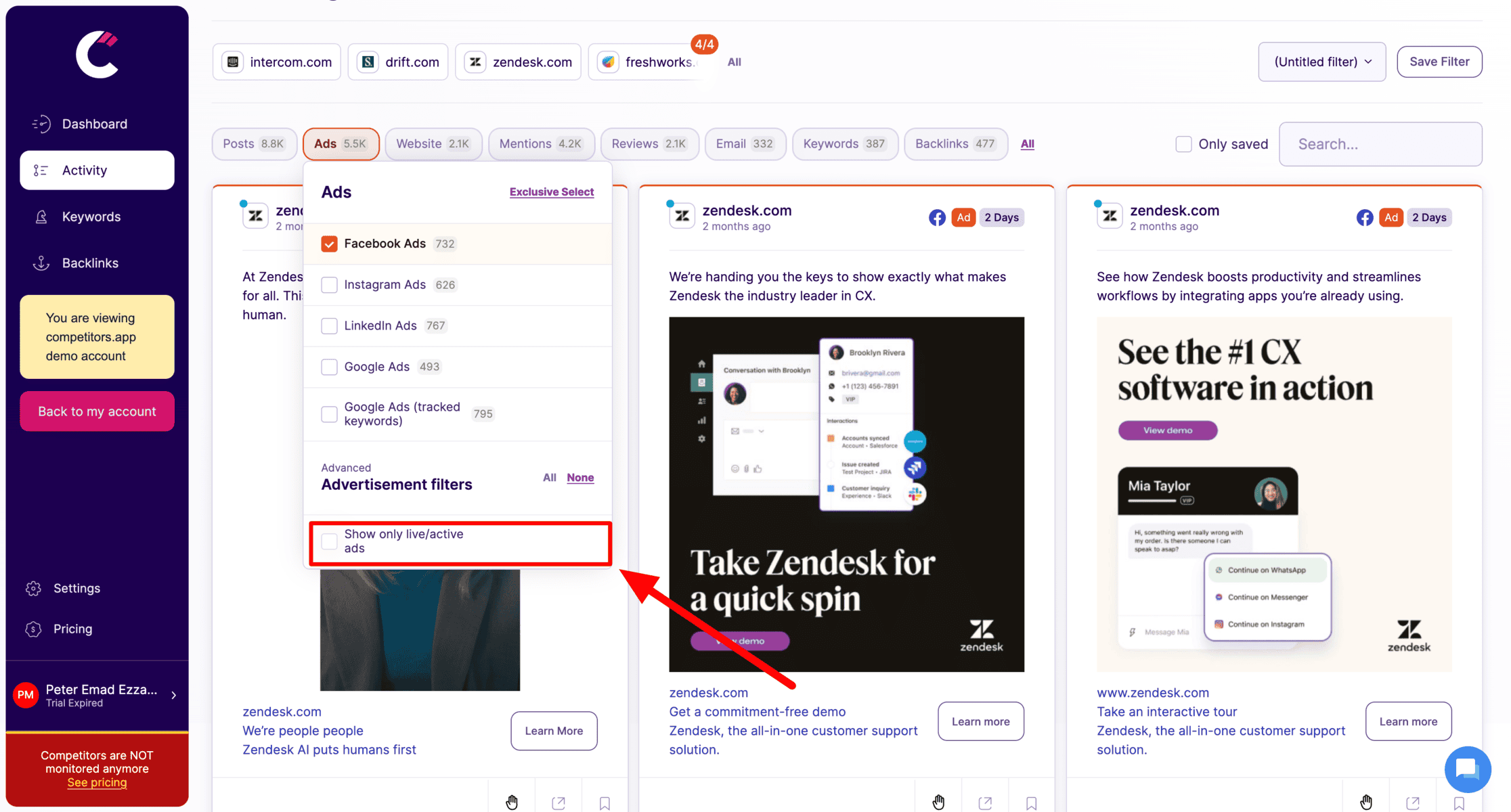
Tracks digital ad campaigns across platforms like Google Ads, Facebook, LinkedIn, and Instagram. It provides details on ad creatives, spending, and performance metrics, helping teams analyze successful ad strategies.

Analyzes competitors’ keyword strategies, organic rankings, and backlinks, allowing teams to refine their own SEO tactics and boost search visibility.

Tracks competitors’ email campaigns, including content, frequency, and engagement metrics, helping sales teams understand email tactics that drive engagement and conversions.
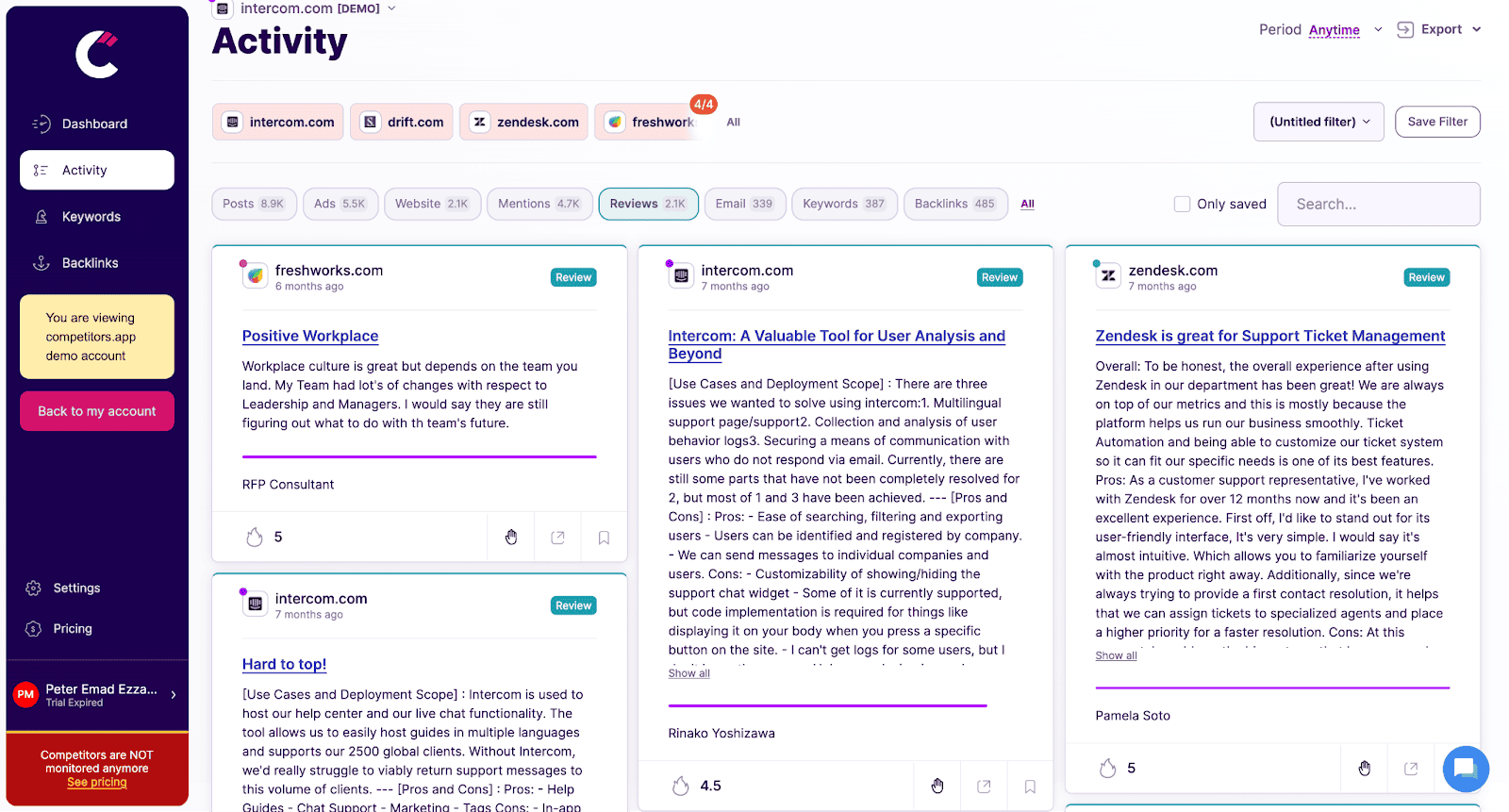
Analyzes customer reviews and ratings for competitors, providing insights into customer feedback, pain points, and product strengths, helping teams craft better sales pitches.
Real-World Examples of Competitive Mapping
To better understand how competitive mapping works, let’s look at some real-world examples that show how businesses apply this strategy:
Example 1: SWOT Analysis for Competitor Mapping
A popular example of competitive mapping is using a SWOT analysis to evaluate competitors. For instance, when Apple launched its iPhone, it used SWOT analysis to evaluate competitors like Samsung and Nokia.
Apple identified Nokia’s strong brand presence and global market share as its strengths, while Nokia’s lack of innovation and failure to adopt touchscreen technology was seen as a weakness.
Apple’s opportunity was to innovate with user-friendly technology, and the threat came from Android’s rise in the smartphone market.
This analysis helped Apple position itself as a leader in smartphone innovation by emphasizing its superior design and user experience.
Example 2: Comparison Table for Market Analysis
A common practice is creating a comparison table to analyze market offerings. For example, when evaluating project management tools like Asana and Trello, companies often compare key features like task tracking, collaboration options, integrations, and pricing.
A simple comparison might look like this:
| Feature | Asana | Trello |
|---|---|---|
| Task Tracking | Advanced | Basic |
| Pricing | $10/month | Free/$10/month |
| Integrations | Extensive | Limited |
| Customization | High | Low |
This allows businesses to clearly see which product excels in certain areas, like Asana’s advanced task management, and which areas need attention, such as Trello’s limited integrations.
By comparing these features side by side, businesses can find gaps and opportunities for differentiation, helping them refine their own offerings.
Frequently Asked Questions (FAQ)
What is mapping competition?
Competition mapping is the process of identifying, analyzing, and visualizing the competitive landscape of your business. It involves comparing your company’s position, products, or strategies against those of your competitors to understand where you stand and where you can improve.
How to create a competition map?
To create a competition map, start by identifying your competitors (both direct and indirect). Then, choose a focus area, such as product features or pricing. Assess your own business against these competitors, highlighting areas where you’re stronger or where there’s room for improvement. Finally, create a visual map—like a comparison chart or SWOT analysis—that makes it easy to see your competitive position.
What is a competitive position map?
A competitive position map is a visual representation that shows how your business compares to your competitors in specific areas such as product quality, price, or market share. It helps businesses understand their relative position in the market and decide on strategies to improve their standing.
What elements are in a competitive map?
A competitive map includes several key elements: the competitors you’re comparing, their strengths and weaknesses, their market position, and the focus areas you’re analyzing (like pricing, product features, or marketing strategies). These elements give you a comprehensive view of your competitive landscape and help you make more informed decisions.

